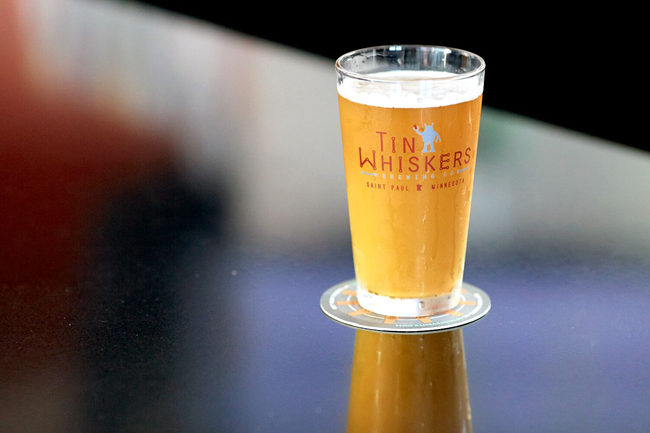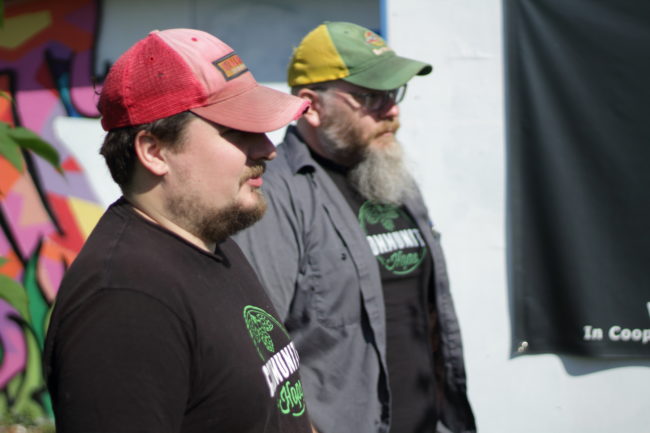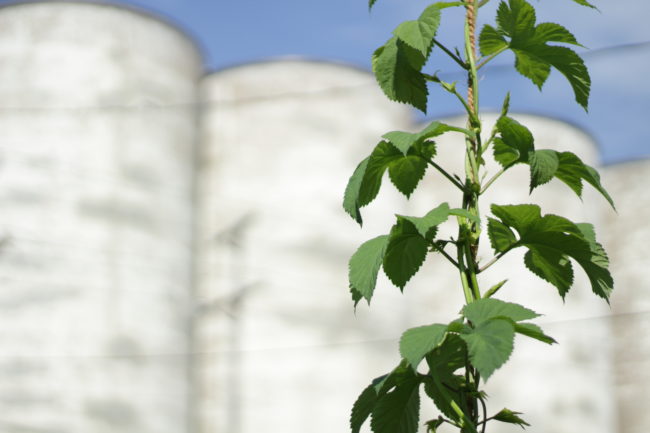 In this Toast we explore what’s new at Tin Whiskers, sample traditional Aquavit from Skaalvenn, and catch up with Community Hops about their Bad Weather brew.
In this Toast we explore what’s new at Tin Whiskers, sample traditional Aquavit from Skaalvenn, and catch up with Community Hops about their Bad Weather brew.

Tin Whiskers Brewing Company in downtown St. Paul has a steady, homegrown following, as one would expect for a small brewery on the East Side. Being located adjacent to CHS Field and close to the light rail guarantees it a stream of thirsty patrons, but rarely does the taproom get much airtime in beer circles. The buzz often includes phrases like inconsistent, a bit off, or simply not exciting enough to warrant a visit.
As their product evolves, Tin Whiskers is becoming more and more underrated. Two recent releases demonstrate a significant improvement, and this blog post may explain the reason for it. Consistency is key, especially for a brewery that is distributing to liquor stores and restaurants.

True to its engineering theme, the brewery has introduced a new series and methodology to capture the taste preferences of the public as well as the growing expertise of the brewing team. The Fourier Series, named after the engineering-inclined mathematician Joseph Fourier, was developed with input from the public. It was like crowdsourcing, but in search of preferences rather than capital.

Recently released, the Daisy Chain Saison ($5 pint) is an example of the results of three rounds of testing and voting. The public was invited to vote on three base malt choices, two hop varieties, and three yeast strains. What resulted was a true-to-style saison with excellent phenolic (meaning yeast-derived flavors, like pepper and clove) character. Strong citrus, black pepper, and spearmint flavors abound, with a lemongrass note on warming. The dry, subtle bitterness appropriately accentuates the mildly hoppy finish. Though brewed with ginger and orange peel, the entire bouquet doesn’t scream ginger.
Daisy Chain was developed to be a house beer for Heirloom, chef Wyatt Evans’ seasonally-based restaurant on Marshall Avenue. The goal was to present a food-friendly beer that is light on the palate, but not lost. At 6.3 percent ABV, it fits the bill.

When you visit the taproom, don’t miss another newbie, the Parity Pilsner. Dubbed a “pre-Prohibition Pilsner,” it clocks in at 4.8 percent ABV and is generally subtle but flavorful. It clearly draws on the German influence — similarly to Schell’s or Summit — rather than the Czech. The cereal malt and dry finish hit many American Lager notes, but the crisp nature and brisk hop finish push it into the Pilsner zone.

Skaalvenn Aquavit
Previous releases from Brooklyn Park’s Skaalvenn Distillery have been so popular that the small operation is already running into capacity issues as it produces as much rum and vodka as possible.
“It’s a good problem to have,” says co-owner Mary Schnitker, explaining that the release of the aquavit had to be delayed.
Speaking with Tyson and Mary Schnitker is refreshing. As small-business owners, they understand an underoccupied niche in Minnesota’s craft distilling — everyday spirits. Unlike many other craft distilleries, they seek not the top shelf, but every shelf.
“We are not looking to be the next premium pour,” explains Tyson. “We would rather be people’s everyday spirit, whether for sipping or mixing.”
Skaalvenn also bucks the trend of producing only spirits traditionally made in the Midwest, or from native plants, making rum one of their flagship products. That being said, their latest spirit draws undeniably from the Nordic roots common to many in Minnesota.
Aquavit is a Scandinavian spirit, with around 40 percent alcohol, traditionally made using caraway. It was first created in the 15th century and has yet to catch on in the U.S. despite the strong American craft distilling movement. In Scandinavia, the spicy liquor is often toasted at holiday time, though in some countries, such as Denmark, it is consumed more regularly as an aperitif.
Skaalvenn aquavit is boozy and potent, with strong anise, fennel, and vanilla flavors. Some nuttiness shows up on warming, as does cardamom. Sipping or taking a shot of aquavit are the two traditional means of consumption, but with 50 percent alcohol, mixing it may be more prudent, as the spirit certainly has a hot quality. This version is not floral or herbal, as the Gamle Ode varieties tend to be; caraway is truly dominant, but in a complex way, similar in intensity to the Vikre Øvrevann aquavit made in Duluth. Although the bottle can’t legally say so, the aquavit is rested on oak, which helps marry the flavors.
Bottles will be on liquor store shelves in the coming weeks.

Community Hops collaborates with Bad Weather
A tiny hop garden in Longfellow has been operating successfully since 2012, thanks in part to donated equipment, volunteer hours, and seedlings from St. Croix Valley Hops, several varieties of which are experimental.
Community Hops is in the business of growing hops for members, rather than breweries, but its influence has spread beyond homebrewers. The story begins with Andrew Johnson, a Longfellow resident and Minneapolis City Council member, trying to find uses for open land. He approached the Minnesota Beer Activists with a small plot of land east of East 38th Street and Minnehaha Avenue, and soon met Tom LaPitz, a hop enthusiast. LaPitz, who was already registered with the Minnesota Hop Growers Association, agreed to make use of this land for hop propagation.
After following a steep learning curve from a legal standpoint, Community Hops has grown from its inception and groundbreaking in 2012, to its first official harvest last fall.

“We harvested 65 pounds last year,” explains LaPitz. This year he forsees 350 to 500 pounds, depending on whether the city is able to install plumbing for an irrigation system at the site. Water has been the biggest challenge for Community Hops — they currently collect rain in large blue barrels from the roofs of several kind neighbors.
Membership in the club means sharing a portion of the harvest, which members use to brew beer, of course, but also for holistic health purposes, for hop oil, or for pickled hop shoots. It costs $25 annually, plus a commitment to work four days a year. There are currently about 50 members.
Last fall, there was a surplus of hops that went on to be used in Randall systems at a few breweries, including East Lake, Fair State, and Dangerous Man. A Randall is a device that acts like a tea infuser through which beer is passed at time of service. It typically contains hops or other botanicals to enhance and change the flavor of a draft beer.

The rest of the orphaned hops were turned over to Bad Weather for a commercial batch of beer. Community Hops approached Joe Giambruno of St. Paul’s Bad Weather Brewing Company to propose brewing a beer, and Giambruno agreed, with the twist that the members do the actual brewing. Due to the surplus of Hallertauer and Mt. Hood hops, head brewer Andy Ruhland came up with the idea to do a sticke alt with rye.
While the alt style is traditional and well defined, the rye adds a certain intrigue. “I wanted to add a twist to a traditional brew, and we love rye over here. I thought its characteristics would play well with a hoppier, stronger altbier,” says Ruhland.

Altbier, meaning old beer, was widely brewed in Germany but is rarely seen in modern craft breweries. The Bad Weather version has very appropriate fruity esters that are the hallmark of the style. The rye and hops play off of one another in a wave of spice, while the cool fermentation leads to an extremely clean character. Chocolate and caramel arise from the complex roasted malt used.
Community Hops has more plots in the works. A completed garden is contained on the patio at Fair State, and the group is looking at sites in North Minneapolis among other vacant lots.

